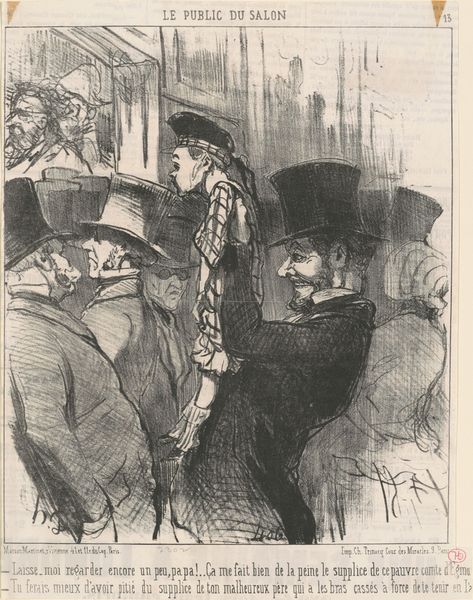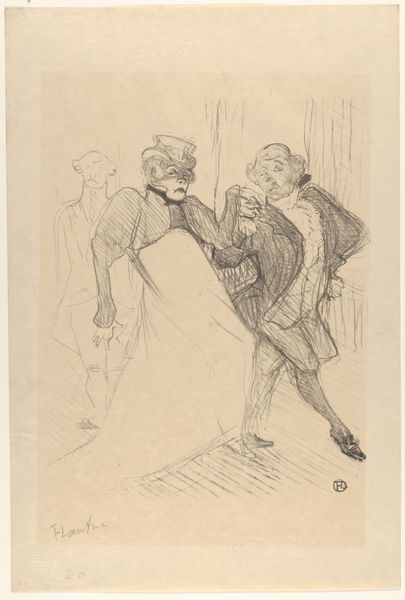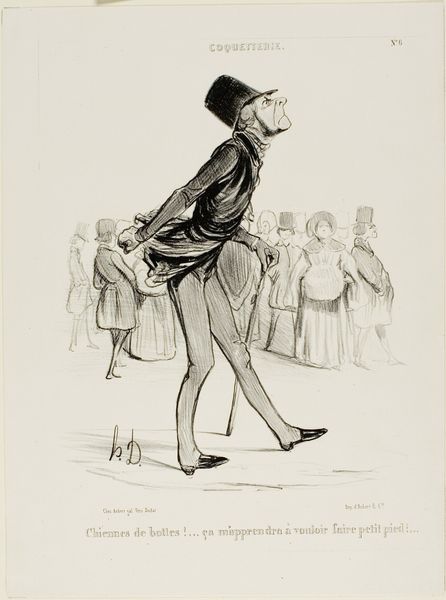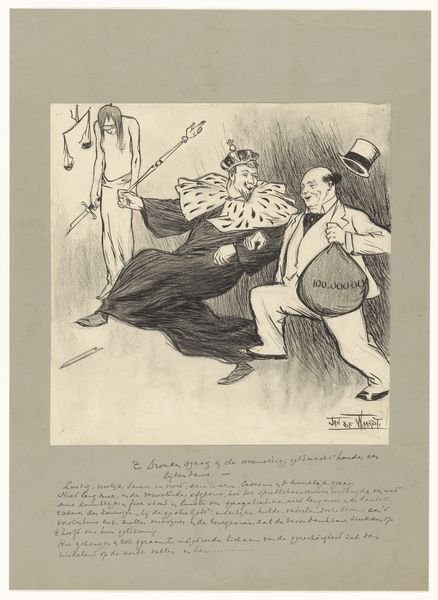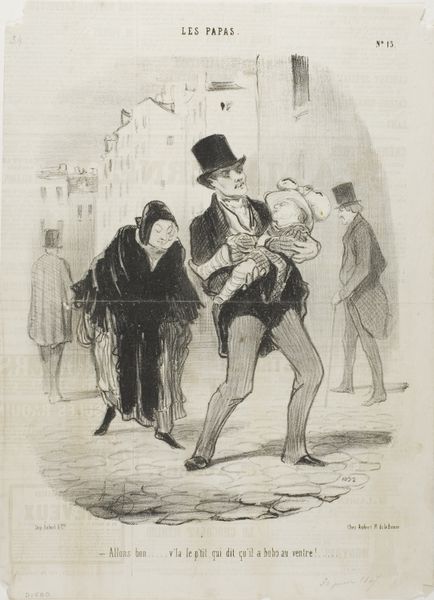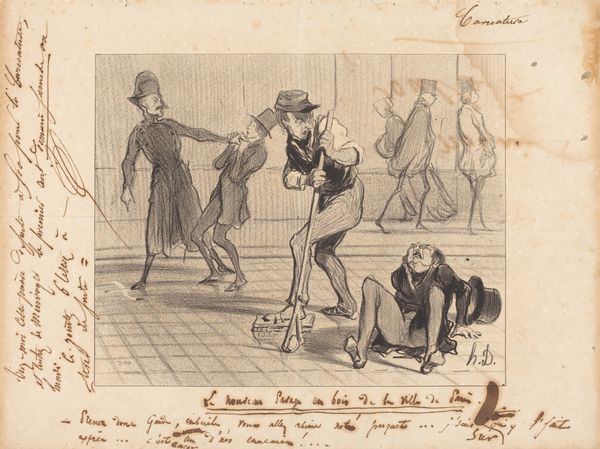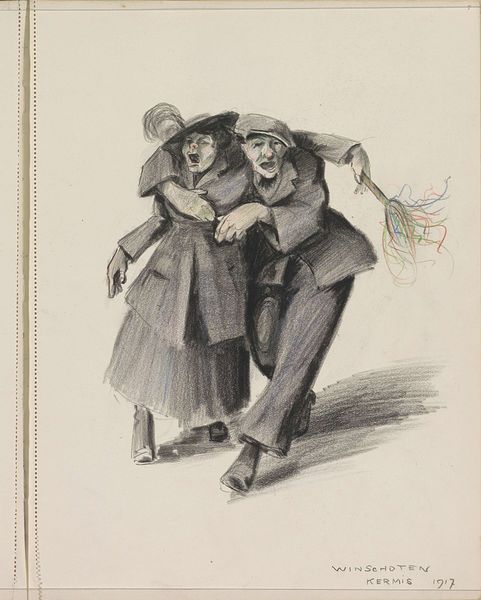
A Visit to the Salon. Obviously all the sculptors are a naughty bunch, plate 1 from Tout Ce Qu'on Voudra 1847
0:00
0:00
drawing, lithograph, print, paper
#
drawing
#
imaginative character sketch
#
quirky sketch
#
lithograph
# print
#
caricature
#
pencil sketch
#
figuration
#
paper
#
personal sketchbook
#
idea generation sketch
#
sketchwork
#
ink drawing experimentation
#
romanticism
#
france
#
sketchbook drawing
#
genre-painting
#
history-painting
#
storyboard and sketchbook work
#
sketchbook art
Dimensions: 268 × 215 mm (image); 330 × 250 mm (sheet)
Copyright: Public Domain
Honoré Daumier's lithograph captures a moment in a Parisian Salon, hinting at the complex relationship between art, morality, and the gaze. A father hurries his children away from a display of sculptures, shielding their eyes. The statues, with their exaggerated poses, echo classical motifs of heroism and the nude form—symbols of idealized beauty. Yet, Daumier suggests these forms have become something else in the 19th century. The averted gaze speaks volumes, a motif that we see echoed throughout history, from religious art to Victorian modesty. Consider the “pudica” gesture, where figures cover their nakedness: it is not merely about concealing the body, but also about acknowledging a sense of shame or awareness of the gaze. This shame is not innate but culturally produced. The hurried exit underscores the anxieties surrounding public art and its potential to corrupt. Daumier’s satire reveals how symbols, once revered, can become objects of scrutiny. The ever-shifting nature of symbols reveals a profound tension between tradition and modernity.
Comments
No comments
Be the first to comment and join the conversation on the ultimate creative platform.

